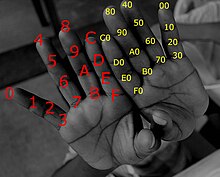User:Anderson duarte007/sandbox
Internet Protocol (Also known as IP) is the protocol by which data is sent from one computer to another on the Internet. Each computer on the Internet has at least one IP address that uniquely identifies it from all other computers on the Internet.
Key Points in this Wiki (Most Likely to be on the quiz)
A MLPPP combines two PPP connections into one. An FTP enables the transfer of files between two computers on the Internet. When you use HTTPS, your web session is managed by a security protocol IMAP is more powerful than POP What is the difference between IPV4 and IPV6?: IPv4 is 32 bits and can support SMTP is the internet standard protocol for transferring email messages from one computer to another. You receive email from an incoming mail server using POP and IMAP
Learning Scale
- I have no clue what IP is.
- I have some idea of what IP is.
- I have a pretty good idea of what IP is.
- I could be up there teaching with yall.
Today students will learn about Internet Protocol how many section there’s on it and how to define all the key terms on this section.
Hexadecimal[edit]
A base-16 number system that allows large numbers to be displayed by fewer characters than if the number were displayed in the regular base-10 system. In hexadecimal, the number 10 is represented as the letter A, 15 is represented as F, and 16 is represented as 10. IPv6 is now included as part of IP support in many products, including major computer operating systems such as Microsoft Windows XP and higher.

Point-to-Point Protocol (PPP)[edit]
A protocol that allows a computer to connect to the Internet over a phone line. Many direct Internet connections, such as cable, modem and DSL connections, are established using Point- to-Point Protocol over Ethernet (PPPoE). PPPoE uses the PPP that is commonly used for dial-up networks and implements it over Ethernet. PPPoE is also used by cable modem, wireless phone carrier and DSL ISPs. The protocol uses the same methods as PPP; however, it allows the point-to- point connection to establish itself on the Ethernet architecture, allowing much faster connection speeds.
Point-to-Point Protocol over Ethernet (PPPoE)[edit]
A protocol that implements PPP on top of the Ethernet architecture to connect an entire network to the Internet.
Hypertext Transfer Protocol (HTTP)[edit]
Hypertext Transfer Protocol (HTTP) is the protocol used to transfer Web pages from a Web server to a Web client, usually a Web browser. Specifically, HTTP is the set of rules required to exchange files, such as text, images, video and multimedia content, across the Web. HTTPS is a secured version of HTTP used to transfer Web pages from a secure Web server to a Web client. When you use HTTPS, your Web session is managed by a security protocol, which encrypts and decrypts your requests as well as the information that is returned by the Web server. You will learn more about HTTPS later in this course.
File Transfer Protocol (FTP)[edit]
is a TCP/IP suite protocol that enables the transfer of files between two computers on the Internet. It obtain access to files through an anonymous FTP server, you use the general user ID "anonymous" and provide your e-mail address as the password. Many major universities have reliable anonymous FTP servers on the Internet. File transfer protocol is An Internet protocol used to transfer files between computers; allows file transfer without corruption or alteration.
Electronic mail (e-mail) protocols[edit]
The outgoing and incoming servers use various protocols to handle sending, receiving and storing email messages.
You send email to others with an outgoing server using Simple Mail Transfer Protocol (SMTP). SMTP is the Internet standard protocol for transferring e-mail messages from one computer to another. It specifies how two e-mail systems interact. SMTP is responsible solely for sending email messages, and is part of the TCP/IP suite.
Post Office Protocol (POP)[edit]
A protocol that resides on an incoming mail server. The current version is POP3. protocol that resides on an incoming mail server. The current version is POP3. The current version of POP is version 3 (POP3). POP3 stores incoming e-mail until users authenticate and download it. POP3 is the more accepted and widely used protocol for receiving and managing e-mail. POP3 servers store and forward email messages to the host. The POP3 server responds to a request, asks for a password, then forwards the messages immediately.
The current version of IMAP is version 4 (IMAP4). IMAP4 handles messages in a more sophisticated manner than POP3 because it allows you to browse and manage e-mail messages while they reside on the server. A POP3 server forces you to download email messages before reading, deleting or otherwise managing them.
Internet Message Access Protocol (IMAP)[edit]
A protocol that resides on an incoming mail server. Similar to POP, but is more powerful. Allows sharing of mailboxes and multiple mail server access. The current version is IMAP4.
Network News Transfer Protocol (NNTP)[edit]
is a public-access worldwide network to which users can submit messages or notes about any conceivable subject. It is considered a legacy service now, and many ISPs no longer support newsgroup access.
References[edit]
